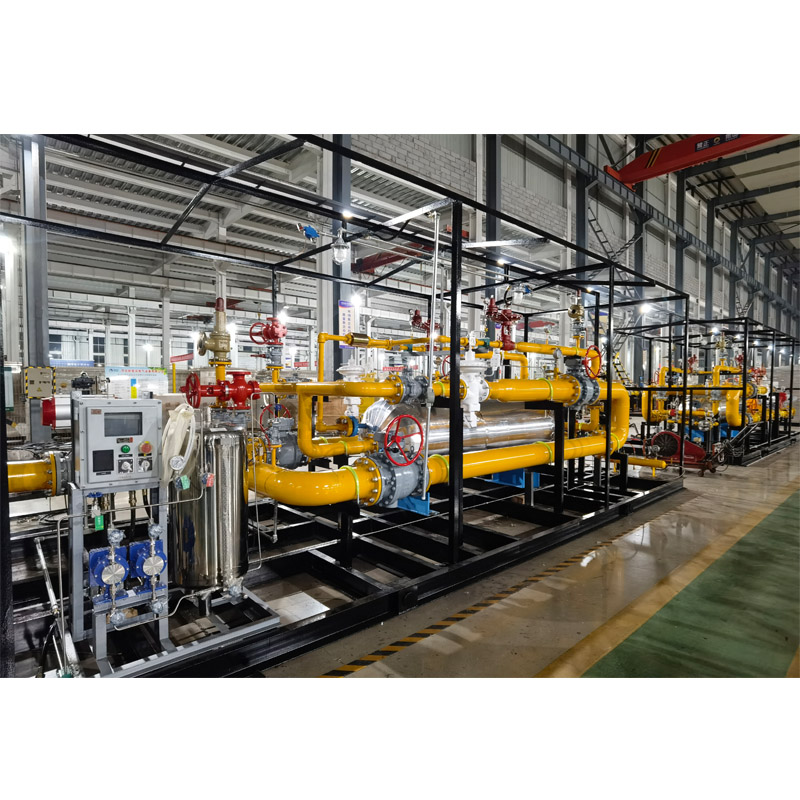
Oct . 07, 2024 02:25
Back to list
محطة تخفيض ضغط الغاز
Gas Pressure Reduction Station Importance and Functionality
In today's world, where energy demands continue to escalate, the efficient management and distribution of gas are increasingly essential. One of the critical components of this system is the Gas Pressure Reduction Station (GPRS). This facility plays a vital role in ensuring that natural gas is delivered safely and efficiently to consumers while maintaining the integrity of pipeline infrastructure.
What is a Gas Pressure Reduction Station?
A Gas Pressure Reduction Station (GPRS) is an intermediary facility within the natural gas distribution network. It is primarily responsible for reducing the high pressure of natural gas as it flows from transmission pipelines to distribution networks that deliver gas to homes and businesses. The process involves taking gas at a high inlet pressure, typically ranging between 300 to 1,200 psi (pounds per square inch), and reducing it to a lower pressure suitable for use, often around 60 psi or less.
The Process of Pressure Reduction
The reduction of pressure in a GPRS occurs through a series of essential steps and components. The station is equipped with pressure regulating valves, which allow for precise control over the outgoing pressure of the gas. When high-pressure gas enters the station, it first passes through a series of filters to remove any impurities and contaminants. This step ensures that the gas is clean and reduces the risk of damage to downstream equipment.
.
Following pressure reduction, the gas is typically heated to prevent condensation of water and other hydrocarbons. This process is crucial in colder climates where lower temperatures could lead to freezing and blockages in pipelines. Finally, the adequately reduced and heated gas is sent into the distribution network, ready for consumer use.
محطة تخفيض ضغط الغاز

Safety and Monitoring
Safety is a paramount concern in the operation of GPRS. These stations are equipped with numerous safety features, including emergency shut-off valves, pressure relief valves, and monitoring systems that continuously track pressure, temperature, and flow rates. In the event of any deviations from safe operating parameters, automated control systems can take immediate action to prevent accidents.
Moreover, regular maintenance and inspections are vital to ensure the ongoing reliability of a GPRS. Personnel conduct routine checks on all components, including valves, pipelines, and monitoring equipment, to identify any potential issues before they escalate into serious problems.
Environmental Considerations
Gas Pressure Reduction Stations are also designed with environmental sustainability in mind. Efforts are made to minimize gas flaring and venting, which can contribute to greenhouse gas emissions. Advanced technologies, such as methane leak detection systems and emissions monitoring, are increasingly implemented to ensure compliance with environmental regulations and to support the overall goal of reducing the carbon footprint of natural gas operations.
Conclusion
In conclusion, Gas Pressure Reduction Stations are essential components of the natural gas distribution system, ensuring that gas is delivered safely, reliably, and efficiently to end-users. Their role in managing gas pressure, ensuring safety, and protecting the environment cannot be overstated. As global energy demands continue to rise, the importance of GPRS will only grow, highlighting the need for investment in infrastructure, technology, and skilled personnel to maintain and improve these critical facilities. The future of energy distribution will rely heavily on such advancements, ensuring that natural gas remains a vital resource for homes and industries alike.
Next:
Latest news
-
Safety Valve Spring-Loaded Design Overpressure ProtectionNewsJul.25,2025
-
Precision Voltage Regulator AC5 Accuracy Grade PerformanceNewsJul.25,2025
-
Natural Gas Pressure Regulating Skid Industrial Pipeline ApplicationsNewsJul.25,2025
-
Natural Gas Filter Stainless Steel Mesh Element DesignNewsJul.25,2025
-
Gas Pressure Regulator Valve Direct-Acting Spring-Loaded DesignNewsJul.25,2025
-
Decompression Equipment Multi-Stage Heat Exchange System DesignNewsJul.25,2025

